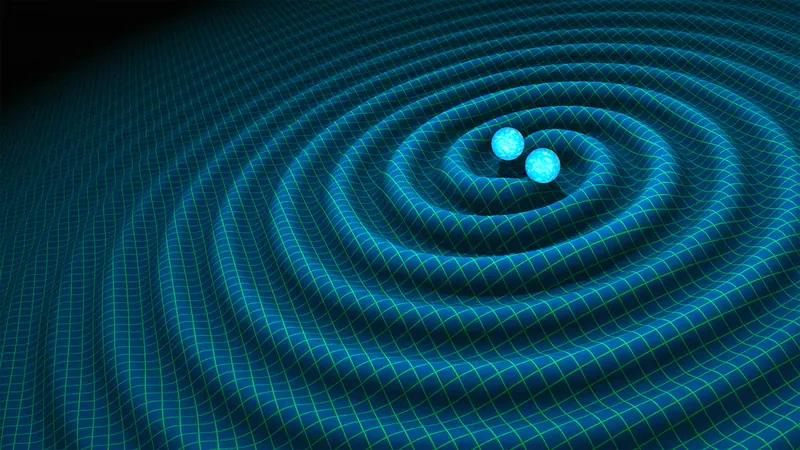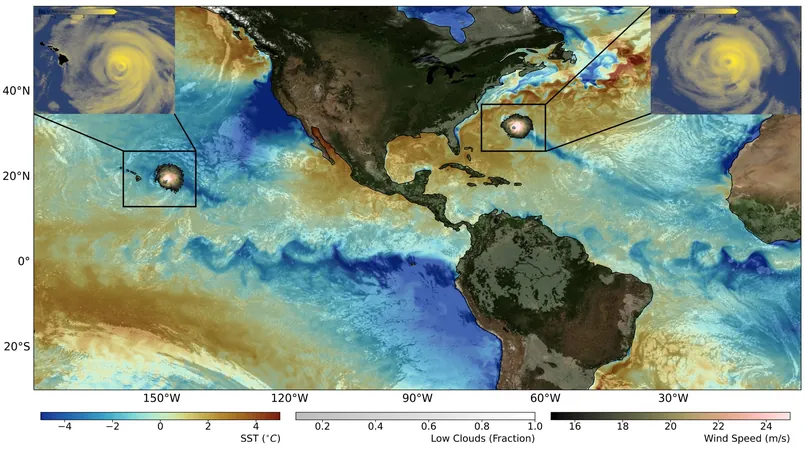
Unlocking the Universe: The Mesmerizing Dance of Black Holes Reveals Hidden Mathematical Wonders
2025-05-16
Author: Wei Ling
In a groundbreaking discovery, scientists have unveiled the most precise predictions of the elusive ripples in space-time, ignited when two black holes near each other in a dramatic cosmic ballet.
Published on May 14 in the esteemed journal Nature, this revolutionary research demonstrates how abstract mathematical theories can ingeniously model these cosmic phenomena, setting the stage for improved interpretations of gravitational wave observations.
Gravitational waves—distortions in space-time's fabric caused by colossal objects like black holes and neutron stars—were first theorized by Albert Einstein in 1915. It wasn't until 2015 that humanity finally detected these waves directly, opening a new window into the universe's most spectacular and violent events.
To decode signals captured by cutting-edge detectors such as LIGO (Laser Interferometer Gravitational-Wave Observatory) and Virgo, researchers require precise models as accurate as weather forecasts. Traditionally, supercomputers simulated black hole interactions through a tedious process, refining trajectories step by step. This method, while reliable, proved slow and resource-intensive.
In a pioneering shift, a team led by Mathias Driesse from Humboldt University in Berlin turned their focus to "scattering events." These are instances where two black holes swirl near each other due to gravity, then veer off without merging—creating intense gravitational waves as they zoom past.
To accurately model these complex encounters, the researchers employed quantum field theory, typically reserved for elementary particle interactions. They began with basic approximations and progressively added layers of complexity, ultimately calculating how black holes are deflected, the energy they radiate as gravitational waves, and their subsequent recoil.
Their model achieved an astonishing fifth post-Minkowskian order precision—the highest yet in simulating these cosmic phenomena. "This is unprecedented and represents the most accurate resolution of Einstein's equations we've seen so far," stated Gustav Mogull, a co-author from Queen Mary University of London, reflecting on the triumph with a sense of wonder.
During their calculations, researchers noted an intriguing emergence of intricate six-dimensional shapes known as Calabi–Yau manifolds. Previously considered mere mathematical curiosities, these structures have long been key players in string theory, bridging the realms of quantum mechanics and gravity. For the first time, they appeared in calculations that could, in principle, be experimentally tested.
Mogull described their discovery as akin to upgrading from a magnifying glass to a microscope—revealing patterns and features about the universe's mathematical blueprint that were previously hidden. "The emergence of these structures illuminates the fundamental math that nature operates on," he added.
This revolutionary study promises to enhance theoretical models that predict gravitational wave signatures, crucial for the next generation of gravitational wave detectors—like the upcoming Laser Interferometer Space Antenna (LISA) and the Einstein Telescope in Europe. According to Mogull, "Improving our precision is essential to match the heightened accuracy expected from these advanced detectors."


 Brasil (PT)
Brasil (PT)
 Canada (EN)
Canada (EN)
 Chile (ES)
Chile (ES)
 Česko (CS)
Česko (CS)
 대한민국 (KO)
대한민국 (KO)
 España (ES)
España (ES)
 France (FR)
France (FR)
 Hong Kong (EN)
Hong Kong (EN)
 Italia (IT)
Italia (IT)
 日本 (JA)
日本 (JA)
 Magyarország (HU)
Magyarország (HU)
 Norge (NO)
Norge (NO)
 Polska (PL)
Polska (PL)
 Schweiz (DE)
Schweiz (DE)
 Singapore (EN)
Singapore (EN)
 Sverige (SV)
Sverige (SV)
 Suomi (FI)
Suomi (FI)
 Türkiye (TR)
Türkiye (TR)
 الإمارات العربية المتحدة (AR)
الإمارات العربية المتحدة (AR)